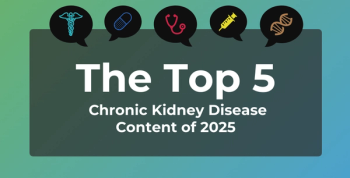
Economic Burden of Anemia in CKD
Approaching a holistic cost of care for a patient with anemia in CKD by integrating pharmacy and medical benefit coverage.
Transcript
Peter L. Salgo, MD: I want to turn back to the insurance question because this is something that turns my eyes into helicopters. There are pharmacy benefit packages and then there are medical benefit packages. We have all of these interventions: we’ve got transfusions, and we’ve got ESAs [erythropoietin-stimulating agents]. Where do they fall, or do they fall between the cracks? Does that mean it’s difficult to get coverage?
Stanley Crittenden, MD: I want to be careful with this question because pharmacy benefits alone don’t work, right? A prescription isn’t always the be-all-end-all answer. Historically, pharmacy benefits typically focused on prescriptions and pricing, not about the total health care issue or solution. That’s changing now, and payers are now recognizing that we should make decisions not in vacuums and silos but with an eye toward the big picture, which means treating the whole person and their clinical outcomes and viewing their health care holistically. We want our members to get the right care at the right time, not just the right pill. If you combine medical and pharmacy benefits, that usually gives us a better-informed view about how to manage the patient and their overall health care expenditures and health care resource utilization.
There’s a recent white paper from HealthCore. HealthCore is one of Anthem’s clinical research arms. It showed that health plans that had integrated pharmacy and medical benefits had lower patient cost, on the order of $30 per patient per month compared to plans that had a carve-out for medical versus pharmacy benefits. If you do the rough math in something like that, if your plan in a state had a million lives, then that’s potentially $300 million a year in total health care cost savings. There is definitely a push now to integrate pharmacy and medical benefits to think about total holistic cost of care.
Peter L. Salgo, MD: That is such a refreshing statement. I’ve been talking to payers for decades, and I’ve got to tell you, yours was the single best answer I’ve ever gotten to this, which is amazing. It’s wonderful. You said that you’d rather treat the patient, not just give the pill, and that if you integrate these together, which always seemed rational to me, you might reduce health care costs. Was that a surprise to the community?
Stanley Crittenden, MD: Maybe for some folks, but from a clinical standpoint, like you just said, it makes sense. If you combine every treatment option you have in your armamentarium, clearly you’ll drive to a better health care resource utilization. It’s not surprising, but it definitely gives us population health data now to think about total cost of care in integrated plans versus siloed and for a pharmacy benefit compared to a medical benefit.
Peter L. Salgo, MD: Do we have a handle on the burden of the complications of the ESAs in terms of health care costs?
Stanley Crittenden, MD: Dan and Bob both alluded to this. For ESAs, given all the data are out, people are well aware of their complications. They are well understood by the clinic community thanks to FDA black box warnings and some of the studies that Dan had just mentioned, CHOIR and TREAT specifically. The economic burdens of ESAs are not as significant as you would think. More importantly, I’d like to stress that clinicians utilize these drugs appropriately. They have a place in the toolbox, and they should be used appropriately. There may be some associated increase in ER [emergency room] utilization in people who are on high doses of ESAs for things like hypertensive emergency or urgency, but as Bob alluded to, if you have a patient who is resistant to an ESA, you’d want to start thinking about pulling those back or holding those anyway because you’re not getting benefit.
Newsletter
Stay ahead of policy, cost, and value—subscribe to AJMC for expert insights at the intersection of clinical care and health economics.





























































